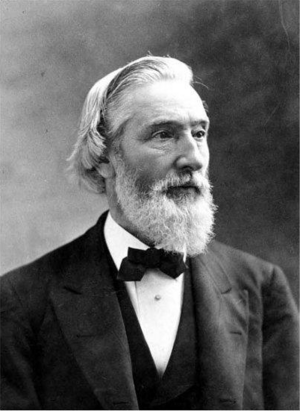William Weston Patton facts for kids
Quick facts for kids
William W. Patton
|
|
|---|---|

William Weston Patton (photo by Charles Delevan Mosher)
|
|
| Born | October 19, 1821 New York, New York, U.S.
|
| Died | October 21, 1889 (aged 68) New York, New York, U.S.
|
| Alma mater | New York University Union Theological Seminary |
| Occupation | 5th President of Howard University |
| Known for | His lyrics of "John Brown's Body" |
William Weston Patton (born October 19, 1821 – died October 21, 1889) was an important American figure. He was a strong supporter of ending slavery, a leader in education, and a smart thinker.
Patton served as the fifth president of Howard University. He also helped write the famous song "John Brown's Body". He was the son of Rev. William Patton. His grandfather, Major Robert Patton, was an immigrant from Ireland who fought in the Revolutionary War.
Contents
Fighting Against Slavery
William Weston Patton was very active in the movement to end slavery. This movement was called abolitionism.
In 1862, he led a group from Chicago to meet with President Lincoln. They asked Lincoln to issue a special order to free enslaved people. This order later became known as the Emancipation Proclamation.
During the American Civil War, Patton helped soldiers. He was a vice-president of the Northwestern United States Sanitary Commission. This group provided aid and comfort to Union soldiers. He visited army camps and wrote reports about what he saw.
In 1886, Patton traveled to Europe and other parts of the world. He went to speak up for the freedmen, who were formerly enslaved people. He stayed abroad for almost a year.
Writing John Brown's Body
In October 1861, Patton wrote new words for the popular battle song "John Brown's Body". His lyrics were the first complete verses for the song. They were printed in the Chicago Tribune newspaper in December 1861.
Patton's words praised the actions of John Brown, an abolitionist. Brown had led a raid on an armory in Harpers Ferry, West Virginia. The song's third verse talks about this attack. The fourth verse compares John Brown to John the Baptist.
Here are some of the lines Patton wrote:
He captured Harper’s Ferry, with his nineteen men so few,
And frightened "Old Virginny" till she trembled thru and thru;
They hung him for a traitor, themselves the traitor crew,
But his soul is marching on.
John Brown was John the Baptist of the Christ we are to see,
Christ who of the bondmen shall the Liberator be,
And soon thruout the Sunny South the slaves shall all be free,
For his soul is marching on.
Two months later, Julia Ward Howe wrote her own famous version of the song. Her lyrics became known as "The Battle Hymn of the Republic".
Education and Leadership
William Weston Patton was a very educated person. He graduated from New York University in 1839. He then studied at Union Theological Seminary in 1842.
After his studies, he became a pastor. He led a church in Boston, Massachusetts for three years. Then he moved to Hartford, Connecticut, in 1846. In 1857, he became a pastor in Chicago, Illinois.
Patton received honorary degrees for his work. DePauw University gave him a Doctor of Divinity (D.D.) degree in 1864. New York University gave him a Doctor of Law (LL.D.) degree in 1882.
From 1867 to 1872, he was an editor for a newspaper called The Advance. In 1874, he taught at Oberlin College and other seminaries.
From 1877 to 1889, Patton was the president of Howard University. This university is in Washington, D.C. While there, he also taught about religion and Christian beliefs.
Images for kids


